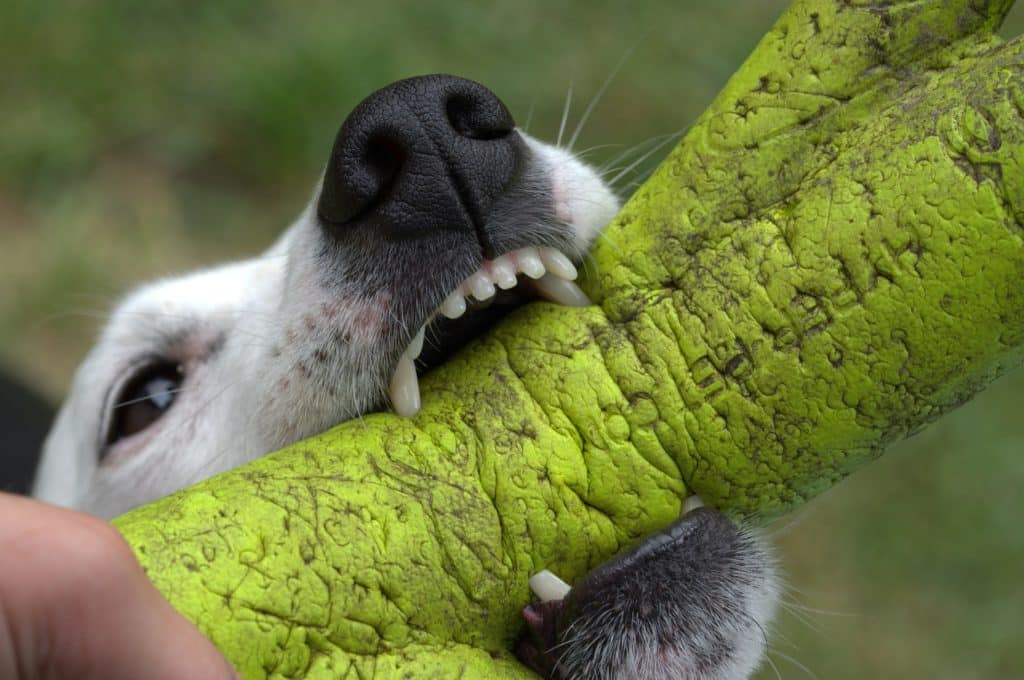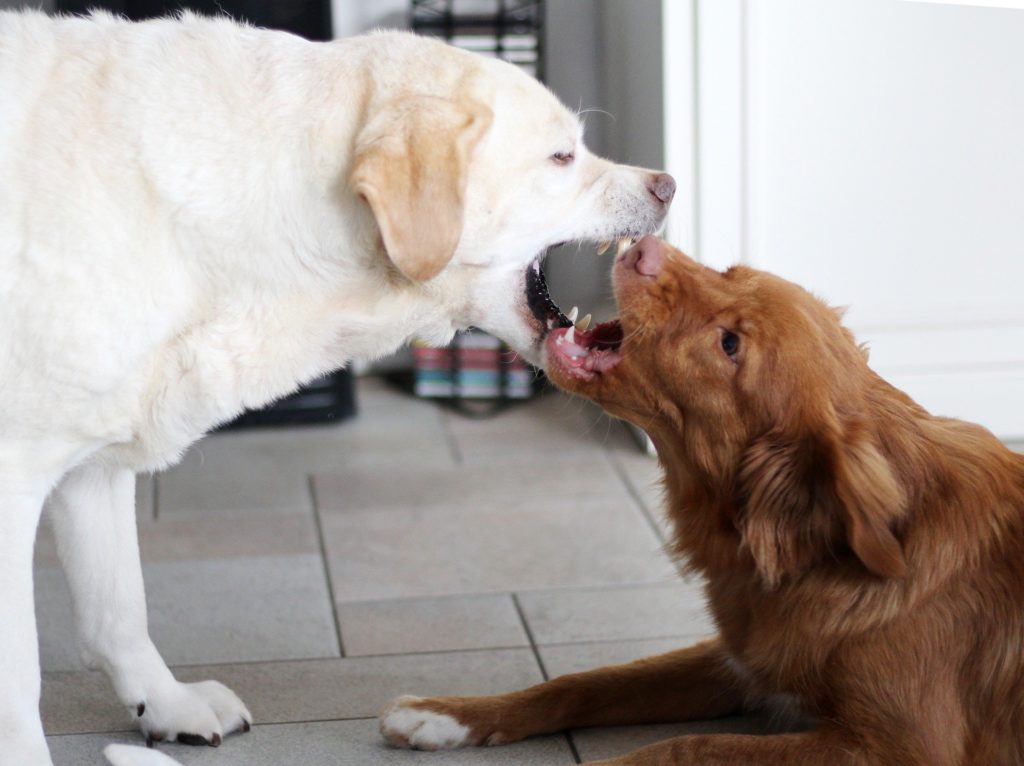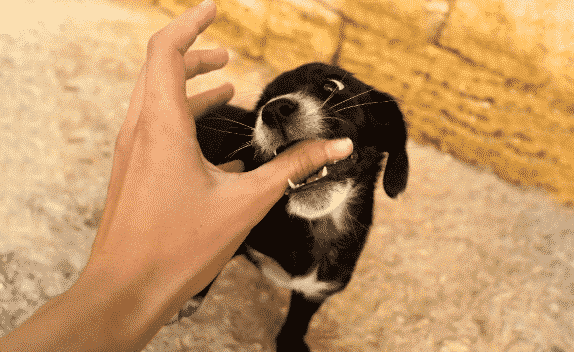One of the most unwelcome surprises of puppy ownership is the pain those tiny little chompers, all 28 of them, can inflict on a hand or foot.
Puppy Teething
- Mouthing/teething is an integral part of growing up for pups; they investigate their world with their mouths and use those teeth for playing and chewing.
- Teething occurs around 4-6 months of age, and it’s normal to see mouthing behavior increase.

Training Puppies to Stop Nipping
Socialization – Most puppies learn the difference between a playful nip and a painful bite when they are exposed to littermates or other dogs. Puppy playdates and contact with healthy, vaccinated dogs are socialization musts and teach bite inhibition organically.
Yipping Back – A bite that’s too hard will elicit a high-pitched “yelp” from the other dog which usually stops biting behavior. Likewise, you can train your puppy to stop playful mouthing or nipping by letting out a “yip” and letting your hand go limp to stop the biting.
Toys – Redirect their attention to a more appropriate toy such as a nylabone or kong teether. Tug rope toys are another great object for dogs to mouth and tug of war that doesn’t involve direct contact with your hand.
Time Outs – Most puppies are looking for your attention, above all else. Removing yourself from the situation when your pup is nipping is punishment enough for our faithful companions! Give them a “time out” by tethering them with their leash to a piece of furniture for a minute or two and walking away. Always supervise your dog from a distance. You can also confine them to a puppy safe space. Return and interact quietly and lovingly after several minutes of calm and reward them for not biting with treats or a more appropriate play toy.
Deterrents – In some cases, a bitter spray deterrent or white stick deodorant can be applied to objects you want to be spared from mouthing.
If your dog is an “ankle-biter”, stop moving when your dog nips at your legs. Redirect them to a toy or let out a “yip”. Teach fast-moving children not to run or wave their fingers and toes in front of dogs. Dogs get the message that it’s time to play “chase” when kids run away or nibble on small moving digits if given the opportunity. Many times, we must train the humans as much as we must train our dogs!
Determining Why Your Puppy or Dog is Biting
Some puppies and dogs bite out of…
- Frustration
- Fear
- Territorialism
- Excitement
- Aggression
- When being startled.
It’s important to differentiate this conduct from normal play, as the actions taken to correct your dog will depend greatly on why they are biting. A dog that begins to bite that has not done so before may be…
- Overly stimulated
- Stressed
- Scared
- In pain
Analyze Their Behavior
A visit to a vet, along with a video and diary of when the behavior occurs, whether skin is broken, and whether any changes to the pet’s environment have occurred, are critical to obtaining a resolution.
Your veterinarian may refer you to an animal behaviorist, a vet who has received additional training and board certification in treating a multitude of disorders (ACVB), or a certified professional dog trainer (CPDT) once physical disease is ruled out.
The Difference Between Play & Aggressive Biting
It can be difficult to differentiate normal, though overly enthusiastic, play biting from inappropriate behavior. Clues as to the reason the dog is biting include considering the context in which the dog is biting as well as the body language of the dog who initiates the bite.

Body Language Clues
Most dogs that are playing will have a relaxed body and face, sometimes a wagging tail, and may exhibit other playful behaviors such as bowing. A fearful dog may have a tucked tail, furrowed brow, ears pinned back, and avoid direct eye contact. An aggressive dog may curl its lip, engage with a direct stare, and have a stiff, raised tail, rigid body posture, and growl.
My Dog is Biting Hands, What Should I Do?
In some cases, teaching dogs to avoid biting human hands may be as simple as avoiding waving them in their faces, using hands only for affectionate petting. Teach a pet to receive treats out of one hand while gently handling feet, ears, and stroking their back with the other. In no case should your hands be used for punishment or excessive physical restraint. If needed, use a training tool such as a collar, harness, and leash to gain physical control of your pet.
Handling a Dog Bite Injury
Should you or another pet sustain a dog bite that breaks the skin, it’s important to receive immediate medical care after washing the wound with mild soap and water. Dogs’ mouths are NOT cleaner that human mouths; bites often create a pocket under the skin where bacteria can grow, causing an abscess or deep infection. Any bite to a human should be reported to the local animal control and ensure the pet is current on its rabies vaccine.
